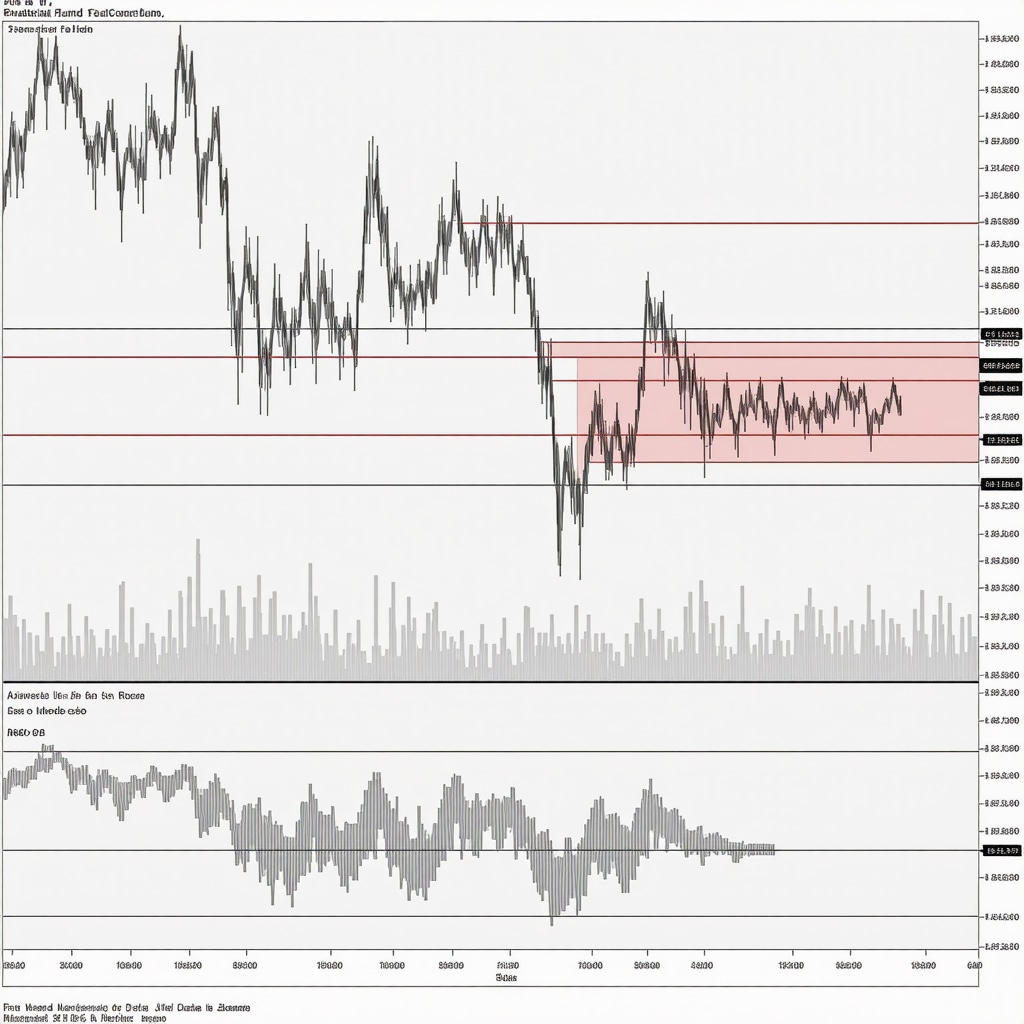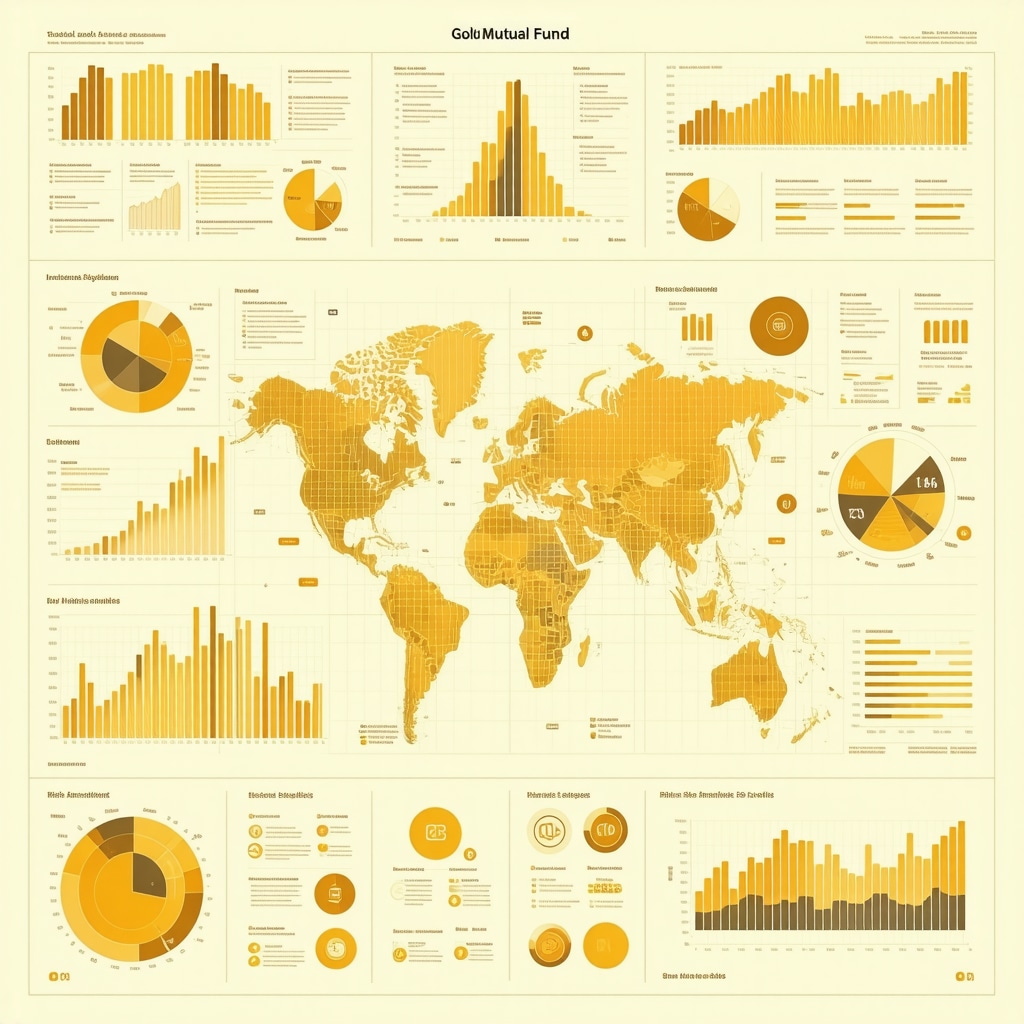Unlocking Growth Potential: Why Gold Mutual Funds Matter in 2025
In the ever-evolving landscape of investment opportunities, gold continues to shine as a resilient asset class. For investors eyeing growth in 2025, gold mutual funds offer a compelling gateway to participate in the precious metal’s upside without the complexities of physical ownership. Unlike direct purchase of bullion, these funds blend diversification, professional management, and liquidity — essential for navigating volatile markets with confidence.
Decoding Gold Mutual Funds: Your Key to Diversified Exposure
Gold mutual funds pool resources from multiple investors to buy gold-related assets, including bullion, mining stocks, and sometimes gold ETFs. This mixture offers broader exposure that mitigates risks inherent in single-asset ownership. Importantly, these funds are managed by seasoned professionals who analyze market trends, geopolitical factors, and inflationary pressures that influence gold’s price dynamics. This expertise can be invaluable for both novice and seasoned investors aiming for steady growth.
How Do I Choose the Right Gold Mutual Fund for My Growth Goals?
Selecting the optimal fund involves evaluating several criteria. First, consider the fund’s historical performance over multiple market cycles, focusing on consistency rather than just peak returns. Next, scrutinize the expense ratio, as lower costs can significantly enhance net gains over time. Additionally, examine the fund’s portfolio composition to ensure alignment with your risk tolerance—some funds lean heavily on mining stocks, which entail operational risks, while others focus on physical gold holdings.
Another critical factor is the fund manager’s track record and investment philosophy. Managers who emphasize active risk management and timely portfolio adjustments tend to navigate market downturns more effectively. For those interested in detailed comparisons, resources like Gold ETFs vs Mutual Funds: Which Is Best for Your 2024 Goals provide insightful analyses that can aid decision-making.
Step-by-Step Process to Buying Gold Mutual Funds in 2025
Step 1: Assess your investment objectives and risk appetite. Determine how gold fits within your overall portfolio strategy, especially as a hedge against inflation or market volatility.
Step 2: Research and shortlist gold mutual funds that align with your goals. Utilize financial platforms and fund fact sheets to gather data on performance, fees, and holdings.
Step 3: Open or use an existing brokerage or mutual fund account with access to your chosen funds. Ensure the platform is reputable and offers transparent transaction processes.
Step 4: Decide on your investment amount and place your purchase order. Consider starting with a manageable sum to monitor fund behavior before scaling up.
Step 5: Regularly review your investment to track performance and rebalance as necessary. Gold prices can fluctuate due to geopolitical events, currency shifts, and central bank policies, making ongoing oversight crucial.
Expert Insights: Navigating Market Forces Impacting Gold in 2025
Understanding broader market dynamics is vital. Central bank gold purchases, as reported by the latest analyses, continue to exert significant influence on global gold prices. Additionally, inflation trends and currency valuations remain key drivers that investors should monitor closely. Incorporating these insights enables more strategic timing of fund purchases and adjustments.
Join the Conversation and Sharpen Your Investment Strategy
Have you started investing in gold mutual funds for 2025? Share your experiences or questions in the comments below to foster a community of informed investors. For a comprehensive dive into diversified gold investment vehicles, explore our guide on gold investment types to broaden your perspective.
Maximizing Returns: Integrating Gold Mutual Funds with Other Gold Investment Vehicles
To optimize growth potential in 2025, savvy investors often complement gold mutual funds with other gold investment types. For instance, pairing mutual funds with gold ETFs can provide a balance between active fund management and liquidity, while physical gold holdings offer tangible asset security. This multi-pronged approach enhances portfolio diversification, which can reduce volatility and improve risk-adjusted returns. For an in-depth comparison, explore our detailed analysis on Gold ETFs vs Mutual Funds: Which Is Best for Your 2024 Goals.
Understanding Tax Implications: A Critical Factor in Fund Selection
Tax treatment of gold mutual funds varies by jurisdiction and can significantly affect net gains. Investors should be aware that some funds are taxed as collectibles, attracting higher capital gains rates, while others may qualify for more favorable treatment. Monitoring the tax policies related to mutual funds and physical gold investments is essential for maximizing after-tax wealth. Consulting with a tax professional familiar with precious metals investments can provide clarity and strategic advantages.
What Are the Hidden Risks in Gold Mutual Funds That Experts Watch Closely?
While gold mutual funds offer diversification and professional management, they are not without risks. One subtle risk is the fund’s exposure to gold mining stocks, which are subject to operational, geopolitical, and environmental risks that can affect performance independently from gold prices. Additionally, liquidity constraints in volatile markets may impact redemption processes. Experts also caution about management style shifts that can alter fund risk profiles unexpectedly. Regular scrutiny of fund disclosures and manager commentary is advised to stay ahead of these concerns.
Leveraging Market Sentiment and Technical Indicators for Smarter Fund Timing
Integrating technical analysis and sentiment indicators can enhance timing decisions for gold mutual fund investments. Key indicators such as moving averages, relative strength index (RSI), and gold futures positioning provide insight into market momentum and potential reversals. Coupled with fundamental drivers like central bank gold purchases and inflation expectations, this approach supports more informed decisions. For advanced strategies, see How to Analyze Gold Market Fluctuations for Smarter Trades.
According to the World Gold Council’s 2024 report, central bank buying remains a significant bullish signal for gold prices, reinforcing the importance of macroeconomic factors in fund performance.[1]
Enhancing Your Strategy: Continuous Education and Community Engagement
Staying informed through trusted sources and engaging with fellow investors can sharpen your gold mutual fund strategy. Share your insights or questions in the comments below to foster a knowledgeable community. Additionally, expand your expertise by reading our comprehensive guide on gold investment types, which covers a spectrum of options tailored for various growth objectives.
Mastering Intricacies: Advanced Risk Management Techniques in Gold Mutual Funds
While traditional risk assessments provide baseline insights, sophisticated investors go further by employing multi-dimensional risk analytics specifically tailored to gold mutual funds. This includes stress-testing portfolios against geopolitical shocks, currency devaluations, and unexpected shifts in mining regulations. For example, scenario analysis models can simulate the impact of sudden central bank policy reversals or mining supply chain disruptions, offering proactive risk mitigation pathways.
Moreover, advanced portfolio managers integrate Environmental, Social, and Governance (ESG) metrics into fund selection, recognizing that mining operations with poor ESG ratings may face operational shutdowns or reputational risks that materially affect fund performance. This layer of analysis helps differentiate funds that are not only profitable but also sustainable in the long term.
How Can Investors Quantify and Mitigate Idiosyncratic Risks in Gold Mutual Funds?
Idiosyncratic risks, particularly those tied to mining stock holdings within gold mutual funds, can cause divergence from gold’s physical price trends. Investors can utilize tools such as factor regression analysis to isolate the component of fund volatility attributable to mining operational risks versus gold price fluctuations. Hedging strategies might include complementing mutual fund exposure with physical gold or gold futures contracts to offset mining-specific risks.
Additionally, monitoring quarterly fund disclosures for shifts in mining stock weightings or changes in management style can provide early warning signs. Proactive rebalancing based on these insights is crucial to maintaining portfolio stability.
Decoding Market Sentiment Indicators: Beyond Technical Analysis for Gold Fund Timing
Market sentiment analysis has evolved beyond simple bullish or bearish categorizations. Today’s investors leverage sentiment indices derived from social media analytics, options market open interest in gold derivatives, and the Commitment of Traders (COT) reports to gauge nuanced trader positioning and potential inflection points.
Combining these sentiment metrics with classical technical indicators such as moving average convergence divergence (MACD) and Fibonacci retracement levels allows for a multi-layered entry and exit strategy. For instance, a confluence of positive social sentiment, rising open interest in call options, and a technical breakout above key resistance levels may signal a high-probability window to increase gold mutual fund allocations.
Integrating Macro-Economic Models with Gold Investment Decisions
Gold’s behavior is closely tied to complex macroeconomic variables including real interest rates, currency strength, and inflation expectations. Advanced investors incorporate econometric models that blend these variables to forecast gold price trajectories. For example, vector autoregression (VAR) models can help predict how simultaneous shocks in inflation and US dollar strength might impact gold mutual fund returns.
Furthermore, understanding central bank reserve diversification strategies—such as the shift toward de-dollarization and increased gold holdings by emerging markets—provides context for medium to long-term demand forecasts. The 2024 World Gold Council report[1] underscores how these macro shifts are shaping the global gold landscape, influencing fund flows and investor sentiment alike.

Building a Dynamic Gold Mutual Fund Portfolio: Tactical Allocation and Rebalancing Strategies
Static allocation to gold mutual funds is increasingly viewed as suboptimal in volatile 2025 markets. Instead, tactical allocation—adjusting fund exposure based on market signals and macroeconomic forecasts—can enhance risk-adjusted returns. This approach requires disciplined rebalancing schedules aligned with predefined trigger events such as inflation surprises or central bank announcements.
Utilizing algorithmic monitoring tools can alert investors to deviations from target allocations or adverse market movements, enabling timely adjustments. Combining gold mutual funds with complementary assets like inflation-protected bonds or commodity indices further refines portfolio resilience.
Engage with Our Expert Community and Expand Your Gold Investing Acumen
Dive deeper into these advanced strategies by engaging with our expert-led forums and subscribing to tailored market intelligence reports. Whether you seek nuanced risk models or real-time sentiment analysis, our resources empower you to refine your gold mutual fund investment approach for 2025 and beyond. Share your questions or insights below and connect with seasoned investors navigating the gold market’s complexities.
Elevating Portfolio Performance with Tactical Allocation in Gold Mutual Funds
In the dynamic economic environment of 2025, maintaining a rigid allocation to gold mutual funds can limit growth potential and risk management efficacy. Advanced investors are increasingly adopting tactical allocation frameworks that adjust exposure based on rigorous market intelligence and macroeconomic indicators. This proactive stance allows for capitalizing on inflationary surprises, shifts in monetary policy, and geopolitical developments that directly influence gold valuations.
Employing algorithm-driven alerts to monitor deviations from target allocations and emerging market signals enables timely portfolio recalibrations. Integrating gold mutual funds with complementary instruments like Treasury Inflation-Protected Securities (TIPS) and broad commodity indices can further diversify systematic risks and enhance portfolio resilience against unexpected shocks.
Quantitative Risk Management: Harnessing Multi-Dimensional Analytics for Gold Funds
Beyond conventional volatility metrics, sophisticated risk management for gold mutual funds now incorporates scenario analyses, factor regressions, and ESG risk overlays. These methodologies help isolate idiosyncratic risks stemming from mining stock exposure, supply chain disruptions, and regulatory shifts. By stress-testing portfolios against scenarios such as sudden central bank policy reversals or geopolitical tensions, investors gain actionable insights to preempt adverse outcomes.
How Can Investors Quantify and Mitigate Idiosyncratic Risks in Gold Mutual Funds?
Idiosyncratic risk, particularly related to mining equities within gold mutual funds, can decouple fund performance from physical gold price trends. Investors can deploy factor regression analysis to quantify volatility components attributable to operational and geopolitical factors unique to mining stocks. Complementing mutual fund holdings with physical gold or futures contracts serves as an effective hedge against such risks. Vigilant monitoring of fund disclosures and management commentary is essential to detect shifts in risk profiles early and implement rebalancing strategies accordingly.
Decoding Sophisticated Market Sentiment Tools for Timing Gold Fund Investments
Modern market sentiment analysis transcends traditional measures by incorporating data from social media sentiment indices, options market open interest, and Commitment of Traders (COT) reports. These nuanced indicators reveal trader positioning and potential market inflection points that classical technical tools may overlook.
When combined with technical indicators such as MACD and Fibonacci retracement levels, investors can develop a multi-dimensional timing approach. For example, a convergence of positive social sentiment, increased call option open interest, and a breakout above resistance levels may signal optimal entry points to increase gold mutual fund exposure.
Integrating Advanced Macroeconomic Models to Forecast Gold Fund Performance
Gold’s price fluctuations are intricately linked to macroeconomic variables like real interest rates, currency valuations, and inflation expectations. Advanced econometric models, including vector autoregression (VAR), enable investors to analyze the interplay of these factors and predict their combined impact on gold mutual fund returns.
Understanding central bank diversification strategies, including the ongoing de-dollarization trend and rising gold reserves among emerging economies, provides a strategic lens for medium-to-long-term investment planning. The World Gold Council’s 2024 report offers an authoritative analysis of these trends and their implications for gold investment vehicles.[1]

Fostering Expertise: Engage with Advanced Communities to Sharpen Gold Investment Acumen
Immersing oneself in expert forums and subscribing to specialized market intelligence can significantly enhance strategic decision-making in gold mutual funds. These platforms provide access to real-time sentiment data, proprietary risk models, and peer-driven insights. We invite you to contribute your questions and perspectives below to join a vibrant community dedicated to mastering the complexities of gold investing in 2025 and beyond.
Frequently Asked Questions (FAQ)
What are gold mutual funds and how do they differ from physical gold investments?
Gold mutual funds pool investor capital to invest in gold-related assets such as physical gold, mining stocks, and gold ETFs. Unlike physical gold, these funds provide professional management, diversification, and liquidity without the need for storage or insurance. They offer exposure to gold price movements alongside managed risk through diversified holdings.
How do I evaluate the risk involved in gold mutual funds?
Risk evaluation should consider the fund’s portfolio composition, particularly the proportion of mining stocks versus physical gold holdings, as mining equities carry operational and geopolitical risks. Additionally, liquidity constraints, management style changes, and expense ratios influence risk. Advanced techniques include factor regression analysis to isolate idiosyncratic risks and scenario stress-testing against macroeconomic shocks.
What tax considerations should I be aware of before investing in gold mutual funds?
Tax treatment varies by jurisdiction; some gold mutual funds are taxed as collectibles with higher capital gains rates, while others may receive favorable capital gains treatment. Understanding specific tax policies and consulting a tax professional knowledgeable in precious metals investing is crucial to optimize after-tax returns.
Can market sentiment indicators improve timing for investing in gold mutual funds?
Yes, integrating sentiment data such as social media analytics, options market open interest, and Commitment of Traders reports alongside technical indicators like MACD and RSI provides a nuanced view of market momentum. This multi-layered approach can help identify optimal entry and exit points for gold mutual fund investments.
How do macroeconomic factors influence gold mutual fund performance?
Gold prices are sensitive to real interest rates, inflation expectations, currency valuations, and central bank policies. Emerging trends like de-dollarization and increased gold reserves by central banks also impact demand and fund flows. Advanced econometric models, such as vector autoregression, help forecast these effects on fund performance.
What are the benefits of combining gold mutual funds with other gold investment vehicles?
Combining gold mutual funds with ETFs and physical gold enhances diversification, balances liquidity and management style, and mitigates specific risks like mining operational issues. This multi-pronged strategy can improve risk-adjusted returns and portfolio stability in volatile markets.
How can I implement tactical allocation strategies for gold mutual funds?
Tactical allocation involves adjusting gold mutual fund exposure based on market signals and economic indicators rather than maintaining static allocations. Utilizing algorithmic alerts and predefined triggers—such as inflation surprises or central bank announcements—enables timely rebalancing to optimize returns and manage risks effectively.
What advanced risk management practices can be applied to gold mutual funds?
Sophisticated risk management incorporates scenario stress-testing for geopolitical and regulatory shocks, factor regression analyses to isolate specific risk sources, and ESG overlays to evaluate sustainability risks in mining operations. These techniques provide a comprehensive understanding of portfolio vulnerabilities and support proactive mitigation.
How important is continuous education and community engagement in gold investing?
Continuous education and active participation in expert communities facilitate access to real-time data, peer insights, and advanced analytics that sharpen investment strategies. Engaging with knowledgeable investors and subscribing to specialized market intelligence empowers informed decision-making and adaptation to evolving market conditions.
Trusted External Sources
- World Gold Council – Provides authoritative research and data on global gold demand, central bank reserves, and market trends essential for understanding gold investment dynamics and fund performance.
- Morningstar – Offers in-depth fund analyses, performance metrics, and risk assessments critical for evaluating gold mutual funds and comparing investment options.
- U.S. Securities and Exchange Commission (SEC) – Publishes regulatory filings and disclosures for mutual funds, including risk factors and management commentary important for due diligence.
- Bloomberg Terminal – Delivers real-time market data, technical indicators, and sentiment analytics valuable for tactical timing and market sentiment analysis in gold investing.
- Tax Foundation – Provides up-to-date information on tax policies affecting precious metals investments across jurisdictions, aiding in tax-efficient portfolio construction.
Conclusion
Gold mutual funds in 2025 remain a compelling avenue for investors seeking diversified, professionally managed exposure to gold’s growth potential. By understanding portfolio composition, tax implications, and market forces—including technical and sentiment indicators—investors can harness advanced strategies like tactical allocation and multi-dimensional risk management to optimize returns. Integrating gold mutual funds with complementary gold assets further strengthens portfolio resilience amid economic volatility. Continuous education and engagement with expert communities enhance decision-making efficacy in this complex field. We encourage you to share your experiences, explore related expert content, and apply these insights to elevate your gold investment journey in 2025 and beyond.










